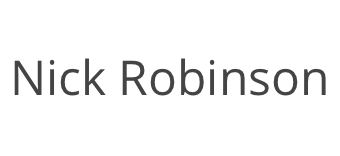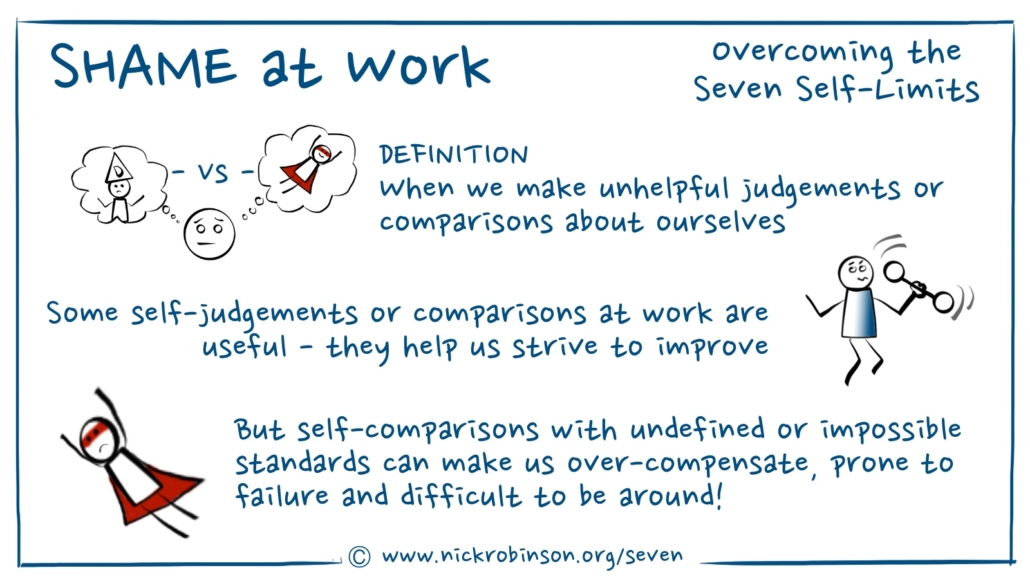Archive for month: May, 2023
Developing Strategic Thinking Skills: A Step-By-Step Guide
Unleash your potential with strategic thinking! Discover how this key skill can transform your professional journey
At work, you’re not just a cog in the machine; you’re an architect building your own and other’s success. Yet, how can you construct something that stands the test of time without a blueprint?
That’s where strategic thinking comes into play. It provides the layout: helping you understand where to lay down the foundation and how to align effort for optimum fulfilment and effectiveness.
Strategic thinking can guide your professional journey. It not only directs your efforts but also bolsters your confidence, fosters recognition, and contributes to a balanced and productive work environment. It’s the bridge between vision and its tangible execution.
But how do we develop strategic thinking skills? Here’s a step-by-step guide:
1. Cultivate a broad perspective
Viewing your work through a wider lens is the first step. As a young manager in a large corporation, I became very curious about the organisational structure and operations, the marketplace dynamics, and how these elements were woven together (or not, in some cases). The understanding I got from that curiosity helped me explain things to others coherently and be ahead of the game. And I’m sure it gave me me a big career advantage.
Make sure you understand the bigger picture of your work within the context of your organisation and industry.
Tip: Try scheduling a brief meeting with someone from a different department or organisation to gain insights about their role and how it might interlink with yours.
2. Incorporate strategic tools
Familiarise yourself with strategy frameworks and tools.
Tip: Start with the classics, for example, Ansoff’s Matrix or Porter’s Generic Strategies and Five Forces models. Then try applying these to your company’s current market situation.
3. Embrace curiosity and continuous learning
Stay inquisitive about your organisation and industry.
Tip: Subscribe to relevant industry newsletters or attend webinars, and keep abreast of trends and developments.
4. Learn to anticipate and plan
Brainstorm a range of future industry trends and discuss what their impacts might be on your organisation.
Tip: Consider what internal company changes might be driven by those trends – and consider how your role or department could adapt to them.
5. Practice decision-making
Before making a decision, assess its long-term impacts and alignment with your team’s or organisation’s broader goals.
Tip: For example, when deciding on a new project to undertake, consider how it fits into the company’s strategic plan. Will it leverage your team’s strengths? Does it align with market trends?
By integrating these steps into your routine, you’ll start building strategic thinking into your professional blueprint. This will bring benefits for your personal career growth and for wider organisational success.
Remember, every architect needs a blueprint, and strategic thinking is yours. Start drafting today! And let me know what your challenges with strategic thinking might be by tweeting me @NicRobCoach
Building Strong Relationships in Remote Teams
Embrace the remote work revolution! Dive into my guide to building strong relationships within your remote team
However much some people would like it to not be the case we are now in the wake of the remote work revolution – it’s happened.
And with it, building strong relationships within teams has become a real concern for some leaders. The importance of getting these relationships right, in terms of people’s personal fulfilment and the wider organisational success can’t be overstated. They have a big impact.
The Silver Lining of Remote Work
Remote work comes with a clear set of advantages. The flexibility, reduced commute time, and improved work-life balance are just a few of the logistical benefits. But beyond that, it also offers unique opportunities for building relationships.
Navigating the Challenges
However, it’s not without its challenges. Lack of face-to-face interaction, communication barriers, and feelings of isolation can make relationship-building difficult.
Strengthening Bonds over Distance
Interestingly, remote work can enhance certain aspects of relationship-building. Increased autonomy, diverse communication channels, and opportunities for quiet reflection can all contribute to stronger bonds.
Harnessing the Power of Collaborative Tools
Remote work also encourages the use of collaborative tools. These tools not only aid in task coordination but also offer other advantages like real-time collaboration and document sharing.
Translating Face-to-Face Experiences
Drawing on face-to-face experiences can be a useful thing to remember to do in a remote setting. Even if ‘remote’ is now your default, we do all have experience of being face to face and we can draw on what makes that work well – and what doesn’t – and apply at least some of those lessons to our remote working. Regular communication and respecting personal boundaries are just a couple of ways we could incorporate those experiences. Maybe there’s other lessons for you too?
Building Relationships: A Practical Approach
Here are some practical tips for building strong relationships:
- Open and clear communication: Over-communicate rather than leave room for misunderstandings. Set expectations, provide feedback, and address issues promptly.
- Recognition of individual contributions: Boost morale and foster a sense of belonging by recognising and appreciating individual contributions. A shout-out in a team meeting or a personal thank you note can go a long way.
- Fostering a supportive culture: Encourage team members to share their ideas and concerns. Address them appropriately to create a comfortable and motivating environment.
- Leaders giving attention to people: Understand the strengths and weaknesses of your team members and provide necessary support. Regular one-on-one check-ins can be a great way to achieve this.
Regarding team-building activities, remember they may not be for everyone. Alternatives such as one-on-one check-ins or team discussions can be just as effective.
Leaders: The Cornerstone of Strong Relationships
Leaders play a pivotal role in fostering strong relationships. Embodying the ethos of “Leaders eat last”, they can create an environment where everyone feels valued and connected.
The Journey Ahead
Building strong relationships in remote teams is both a challenge and an opportunity. It’s a journey that requires patience, effort, and a willingness to adapt. But the rewards – increasing both personal fulfilment and organisational success – are well worth it.
So, if you’re ready to embrace the remote work revolution and build stronger relationships within your team, what the next step on that journey for you?
Tweet me @NickRobCoach to share your thoughts and experiences.
Unlocking the Secrets of High-Performing Teams: The Impact of Trust on Employee Performance – A Research Summary
Discover trust’s power to fuel exceptional performance and ignite your team’s success!
It’s easy to argue that trust is a fundamental component of any successful organisation. But does it really foster a positive work environment, enhance collaboration, and ultimately, improve employee performance? This post summarises the main findings from four sets of useful research studies, looking at evidence of the impact trust has on people’s performance at work.
Trust and Team Performance
The paper “Trust and Team Performance: A Meta-Analysis of Main Effects, Contingencies, and Qualifiers” provides a comprehensive analysis of the relationship between trust and team performance. The study finds that trust does positively influence team performance. However, this effect can be moderated by factors such as task interdependence and cultural context. In essence, when team members do trust each other, they are more likely to collaborate effectively, leading to improved team performance.
The Role of Trust in Organisational Settings
In the paper “The Role of Trust in Organisational Settings: An Integrative Model”, the authors propose that trust plays a critical role in several organisational processes. For example, trust impacts leadership dynamics, team interactions, and the success of organisational change initiatives. They find that a trusting environment allows people to take calculated risks, innovate, and engage more deeply with their work. All of which can enhance overall performance.
Trust in Leadership
The study “Trust in Leadership: Meta-Analytic Findings and Implications for Research and Practice” presents a meta-analysis of research on trust in leadership. The findings suggest that trust in leadership is positively associated with job performance, job satisfaction, and organisational commitment. Leaders who earn trust can foster a work environment where people feel valued, leading to increased productivity and job satisfaction.
Trust, Risk-Taking, and Job Performance
The paper “Trust, Trustworthiness, and Trust Propensity: A Meta-Analytic Test of Their Unique Relationships with Risk Taking and Job Performance” explores the relationships between trust, risk-taking, and job performance. The study finds that trust and trustworthiness are positively associated with job performance. Interestingly, they also find that our natural inclination to trust others is not significantly related to job performance. Suggesting that it’s not just our propensity to trust, but the actual presence of trustworthiness in the workplace that influences performance.
Summary
In conclusion, trust does play a vital role in enhancing people’s performance at work. Whether it’s trust among team members, trust in leadership, or the general presence of trust in an organisation, there is evidence that trust significantly impacts job performance.
Leaders and organisations should work on fostering open communication, empowering their teams, and cultivating an environment of trust. Then they can drive remarkable performance. Take the first step to more engaged and satisfied people – and start reaping the benefits!
27 Executive Coaching Tips: A Cheat Sheet for Enhancing Your Leadership Skills
Elevate your leadership skills with these 27 quick and effective executive coaching tips. Boost your team’s morale and productivity today
Leadership is like conducting a symphony. It’s about bringing together different instruments (team members) to create a harmonious performance. Here are 27 quick tips to help you conduct your leadership symphony:
- Embrace Learning: Stay open to new ideas.
- Lead by Example: Actions speak louder than words.
- Communicate Clearly: Clarity builds trust.
- Delegate Wisely: Empower your team.
- Give Constructive Feedback: Encourage growth.
- Listen Actively: Show your team they’re heard.
- Foster Positivity: Be the beacon of optimism in your office.
- Embrace Change: Turn it into opportunities.
- Promote Teamwork: Celebrate collective achievements.
- Invest in Self-Care: You can’t pour from an empty cup.
- Set Clear Goals: Give your team a clear direction.
- Show Empathy: Understand your team’s perspective.
- Be Decisive: Make informed decisions promptly.
- Stay Humble: Remember, we all have plenty to learn and everyone has something to teach you.
- Be Consistent: Consistency builds trust.
- Encourage Innovation: Foster a culture of creativity.
- Show Appreciation: Recognise your team’s efforts.
- Stay Resilient: Get knocked down seven times – get up eight.
- Practice Patience: Good things take time.
- Be Transparent: Honesty also fosters trust.
- Stay Adaptable: Be ready to change direction (and change your mind) when necessary.
- Promote Balance: Good work-life balance boosts creativity as well as productivity.
- Eyes on the Prize: Stay focused on the outcomes you want.
- Encourage Autonomy: Trust your team’s abilities and intentions.
- Stay Organised: Boost focus and efficiency with well-structured workflow.
- Promote Continuous Improvement: Strive for better, always.
- Be Approachable: Let your team know they can come to you.
Leadership isn’t about being perfect. It’s about striving for improvement, one step at a time.
Share your own tip – what’s helped your leadership the most? @ me on twitter
How to Use Self-Reflection for Personal Growth These Days
Turn the mirror on yourself for up-to-the-minute growth. Discover the power of self-reflection
Self-reflection is like looking in a mirror, not to scrutinise your appearance, but to understand your inner-self.
Here are three contemporary ways to use self-reflection for personal growth that’s current and relevant:
- Identify Strengths: Reflect on your achievements and successes. What skills and qualities helped you reach these heights? These strengths are like the big branches of your personal growth tree.
- Recognise Weaknesses: It’s equally important to acknowledge areas for improvement. Don’t see these as failures, because doing that makes it hard to accept and learn from the experience. Instead, think of them as the roots, nourishing your growth tree so it can become stronger.
- Set Goals for Improvement: Once you’ve identified your strengths and weaknesses, set specific, achievable goals for growth. These are the fruits you aim to harvest from your tree that will keep you up-to-the-minute next time around.
Remember, self-reflection is a powerful tool for personal growth.
Use it wisely, and you’ll see your growth tree flourish now and in future.
What’s one personal growth goal you have for 2023? Share in the comments below while they’re open or @ me on twitter – and let’s grow together.
How to Navigate Office Politics as a New Leader in Today’s World
Steer your ship through the sea of office politics. New leaders, here’s your compass for the world today
Navigating office politics can often feel like sailing in stormy seas. As a new leader, you’re the captain of your ship, so it’s crucial to steer with confidence.
Here are three tactics to help you navigate these waters now:
- Build Alliances: Just as a ship needs a crew, a leader needs allies. Forge relationships based on mutual respect and shared goals. Remember, everybody brings unique skills to the table.
- Manage Conflicts: Storms are inevitable in the sea of office politics. When conflicts do arise, address them directly but tactfully. This way, you can be the lighthouse guiding your team through the rough parts.
- Establish a Positive Presence: As a leader, you’re the figurehead of your ship. Your actions set the tone for your crew. Make sure you lead with integrity and authenticity – and positivity to inspire the same in your team.
Remember, navigating office politics is a journey, not a destination. Keep your compass pointed towards these tactics, and you’ll sail through today’s leadership challenges with confidence.
Ready to navigate the seas of office politics?
Share your biggest leadership challenge these days in the comments below while they’re open or @ me on twitter
27 Ways to Recognise Shame at Work
Shame at work happens when we compare ourselves to an undefined or unreachable standard.
Instead of helping us to strive and improve, when it becomes unhelpful, shame can make us feel a constant sense of failure to achieve those standards. It can make us over-react, over-compensate and be generally tough to be around at work!
The first step to overcoming it, is to learn to recognise it. Here’s 27 ways to do that!
Shame at Work – Definition
The Seven Self-Limits
We all have a set of unconscious Self-Limits that restrict what we say and do at work.
They’re intended to help keep us safe. To stop us from doing or saying anything which might make us look stupid, bite off more than we can chew or annoy the people around us. Most of the time they’re helpful, moderating our behaviour so we can get on with others and not over-stretch ourselves.
But at other times, the Self-Limits can really get in the way of what we actually want to achieve. Holding us back, making us try too hard in the wrong ways, and sucking the joy out of what we do get done!
Shame is one of those Self-Limits.
Shame
Shame is when we’re making a judgement or comparison about ourselves that is unhelpful.
Now, not all self-judgements or comparisons are unhelpful – some are useful. For example, if I notice that my failure-rate at a specific task is higher than other people’s failure rates, I can start to look at what might be causing it. And see if I can improve.
Unhelpful self-judgements or comparisons
But unhelpful self-judgements or comparisons are when I compare my self to a standard I haven’t defined, and then regard myself as ‘bad’ or a failure for not having reached that standard.
Instead, I just tell myself:
I’m not good enough
or
If only I was better
And instead of helping me to progress I might over-compensate. Putting too much effort into the wrong priorities or trying too hard just at the wrong times. And when effort goes in the wrong direction that can paradoxically lead to failure anyway. Shame also tends to rub-off on the people around us in the wrong way. Either our shameful judgements about ourselves mean that we don’t contribute to the team in a positive and helpful way. Or we can start to look at other people the same way – “I’m not good enough – and neither is he!”
The Way out of Shame
As with all the Self-Limits, to first step to overcoming the negative parts of shame is to become much more aware of it. And I’ll cover recognising shame in the next couple of articles.
Look out for more in this series using the link at the top of this page.
Trust yourself.
Coaching to help leaders and teams turn challenging dynamics into great working relationships







